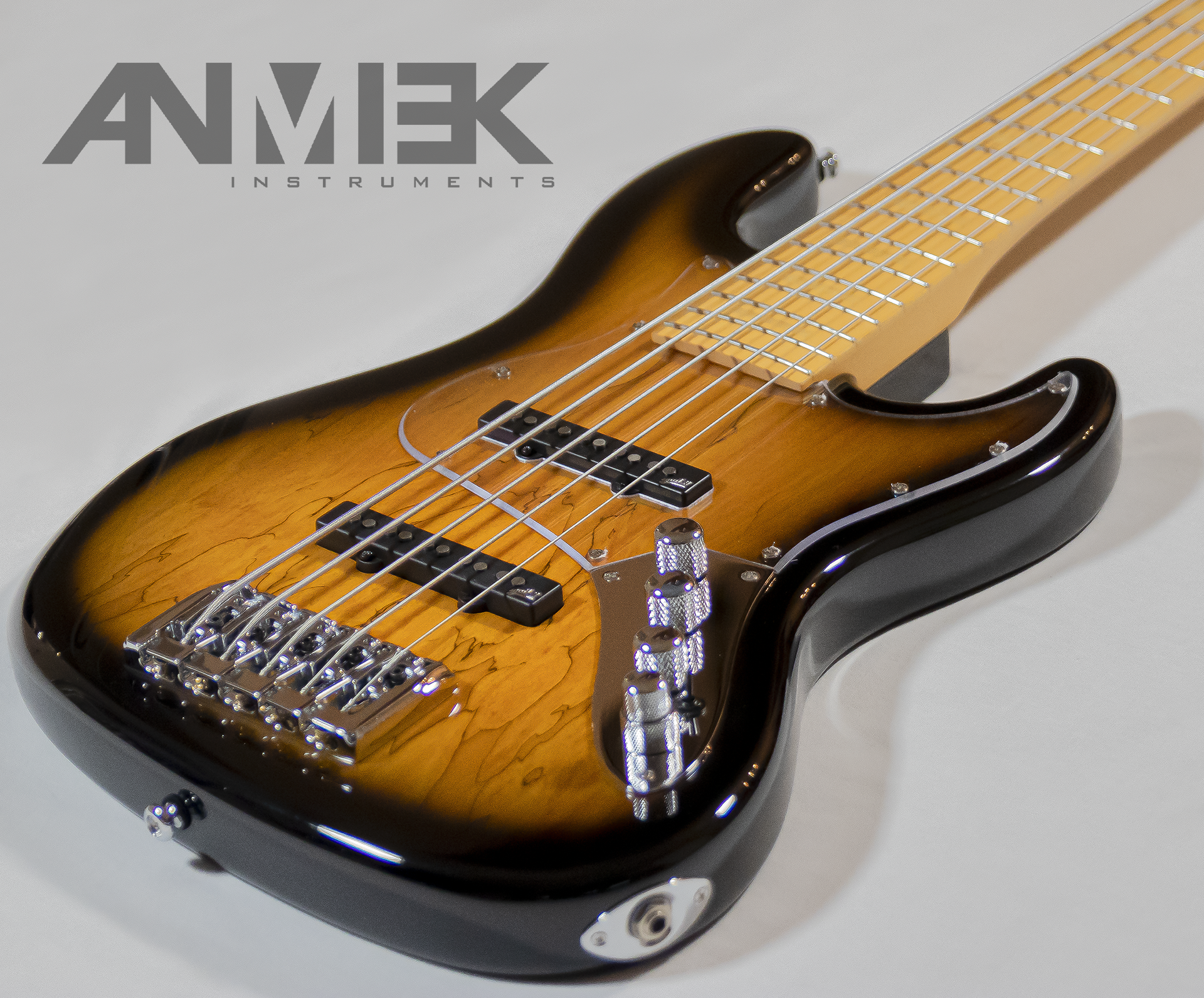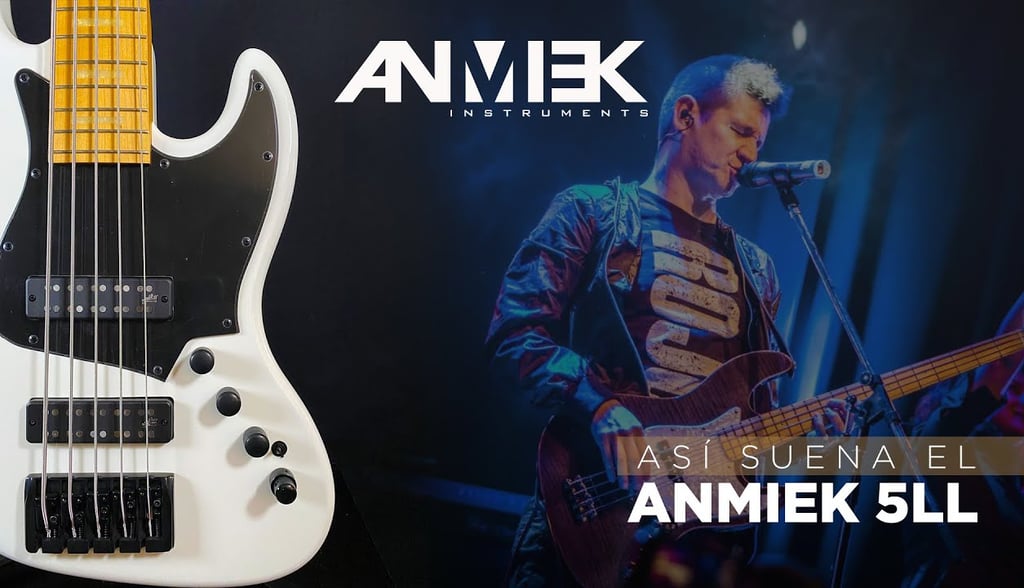
ABOUT ANMIEK
INTERVIEW WITH EMMANUEL ESPINOSA ABOUT ANMIEK


What was the reason for founding ANMIEK?
There are two words that have driven us from the beginning: "serve musicians." That simple. But let me explain a bit more. It bothers me that so many companies see musicians only as a market... We see musicians first and foremost as artists, and at the heart of ANMIEK is the goal of putting quality, classy tools into the hands of both seasoned and beginning artists. To put the instrument of their dreams into every artist’s hands!
What makes an ANMIEK bass or guitar different from other brands?
We’re not reinventing the wheel, but we are creating a beautiful blend of the classic and the modern without forgetting that sound and feel are the most important things... I could say a lot, but I’ll sum it up like this: when someone plays an ANMIEK instrument, it feels like they’re picking up a vintage instrument — meaning super comfortable and full of character — but blended with modern detail and power.
What are the defining characteristics of ANMIEK?
At different times in my life, I’ve owned different types of basses and guitars. I’ve had those made from exotic woods with strange names — ones I was convinced to buy because a famous bassist used or endorsed them. I enjoyed them for a while, but interestingly, even though they were beautiful to look at, they weren’t always the most versatile for different styles, or the most useful for recording. Would I like to own one? Of course — but I’m not a collector. I like to use the instruments I invest in... and many times I found those expensive instruments spent more time in the closet than being played. Over time, I realized there were certain woods and combinations that sounded excellent both in the studio and live — regardless of the music style or even the amp — they always added to the song. Usually, those instruments were old, vintage ones. And as vintage gear becomes more expensive — or poorly maintained — we thought: how can we blend vintage with modern? That’s when the idea for ANMIEK was born. ANMIEK doesn’t just use classic and excellent woods like alder and swamp ash, but we combine that with the tasteful sound of '70s-style pickups, high-quality hardware, and finishes and paint details that I’m sure many will enjoy.
What would you recommend to someone thinking about buying an ANMIEK instrument?
We’ve worked very hard to create instruments that any musician — professional or beginner — can afford without going into debt. We haven’t cut corners on materials or parts. We’ve poured our hearts into creating the ideal instrument for every musician. What I recommend is: watch all the videos, get informed, and I’m sure you’ll see the versatility of an ANMIEK is something very few instruments can match. And I can also assure you that if you choose an ANMIEK bass or guitar, it’ll feel like you’ve finally found the instrument you’ve been looking for years.
What effects or pedals do you use? Do you use a pedalboard?
I always process the bass as little as possible. Live, I only use a tuner and occasionally an octave pedal. When I travel with RoJO (my band), I add a distortion pedal for two or three songs and sometimes, very rarely , I use a wah pedal. In the studio, I almost always record with the bass in passive mode. It was rare for me to use an active bass in the studio, but lately I’ve been using the STUDIO EE [ANMIEK] in active mode.
What effects do you use in the studio?
I’ve used flangers or delays, in addition to what I just mentioned about live performances. Sometimes I record with a compressor, or one is added later in the mix. Oh, and in one of the few bass solos I’ve done — in the song "No hay condenación" (from the Rojo album) — I used a vocoder.
If you could only have one bass, which one would it be?
It would definitely be an ANMIEK — but it’s hard to choose just one! (laughs) My first thought was the model I designed — the Studio EE "Emmanuel Espinosa" Signature — because it has all the modern features and versatility used in today’s music. But you can also turn off the preamp and have a passive bass with tone control, which is crucial for recording. However, lately I’ve been using the PJEP a lot, both live and in the studio. It’s fully passive, but it has an incredible sonic weight. Even live, I don’t use an external preamp — it sounds powerful and full of character on its own.
© 2025 ANMIEK Instruments. All Rights Reserved.


